Abstract
1 The elimination and metabolism of diazepam in man was investigated following the induction of the liver microsomal enzyme system by antipyrine. 2 Seven healthy volunteers were given 1200 mg antipyrine as an inducing agent for a period of 14 days. Before and after the induction period the elimination of diazepam and desmethyldiazepam was measured in the plasma by gaschromatography. As parameters of liver microsomal enzyme activity, antipyrine elimination and gamma-glutamyl-transpeptidase in the plasma, D-glucaric acid and 6-beta-hydroxycortisol urinary excretion were measured on both occasions. 3 Following the induction period most parameters of microsomal enzyme activity measured were significantly changed indicating an increase of the microsomal enzyme system. The elimination of diazepam was significantly altered having a half-life of 37 h before and 18 h afterwards combined with a significant increase in total body clearance after the induction period, although the volume of distribution remained unaltered. The formation of the main metabolite N-desmethyldiazepam was not changed, but its elimination was increased having a half-life of 139 or 58 h respectively. 4 The elimination of unchanged diazepam and desmethyldiazepam is significantly increased by the induction of the liver microsomal enzyme system using antipyrine as an inducing agent in healthy volunteers, which might be important under certain clinical conditions.
Full text
PDF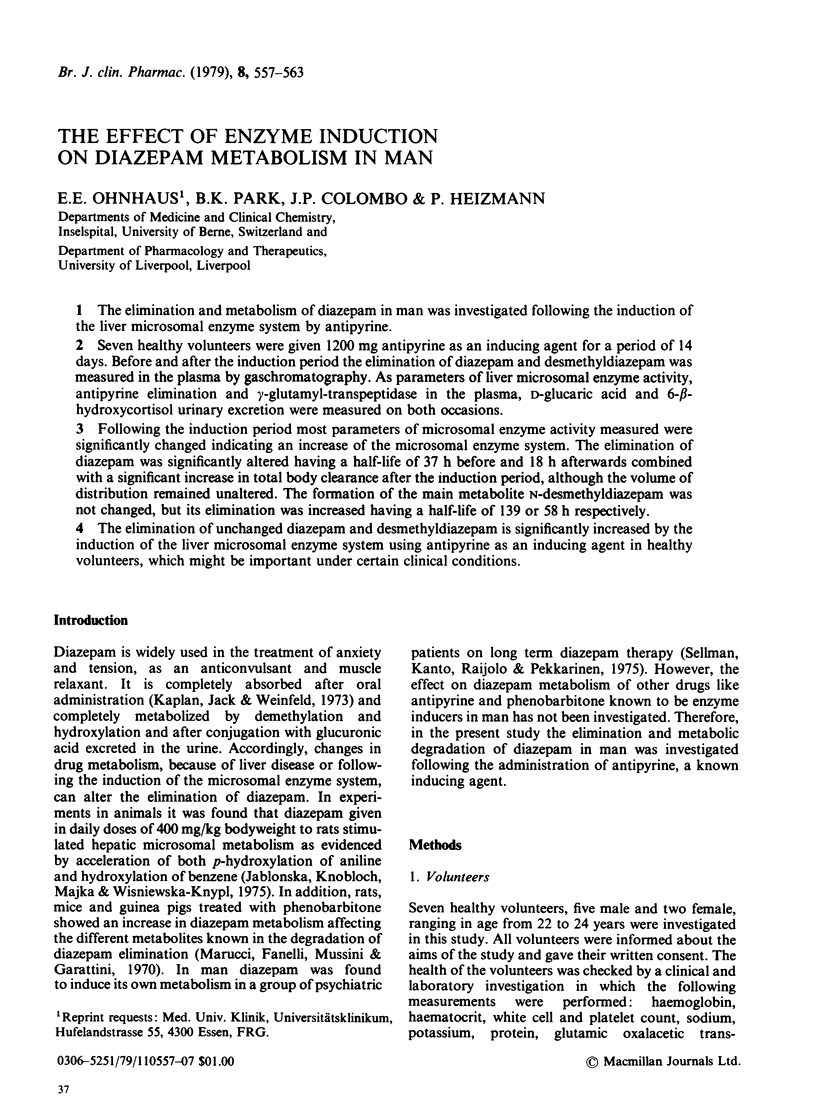
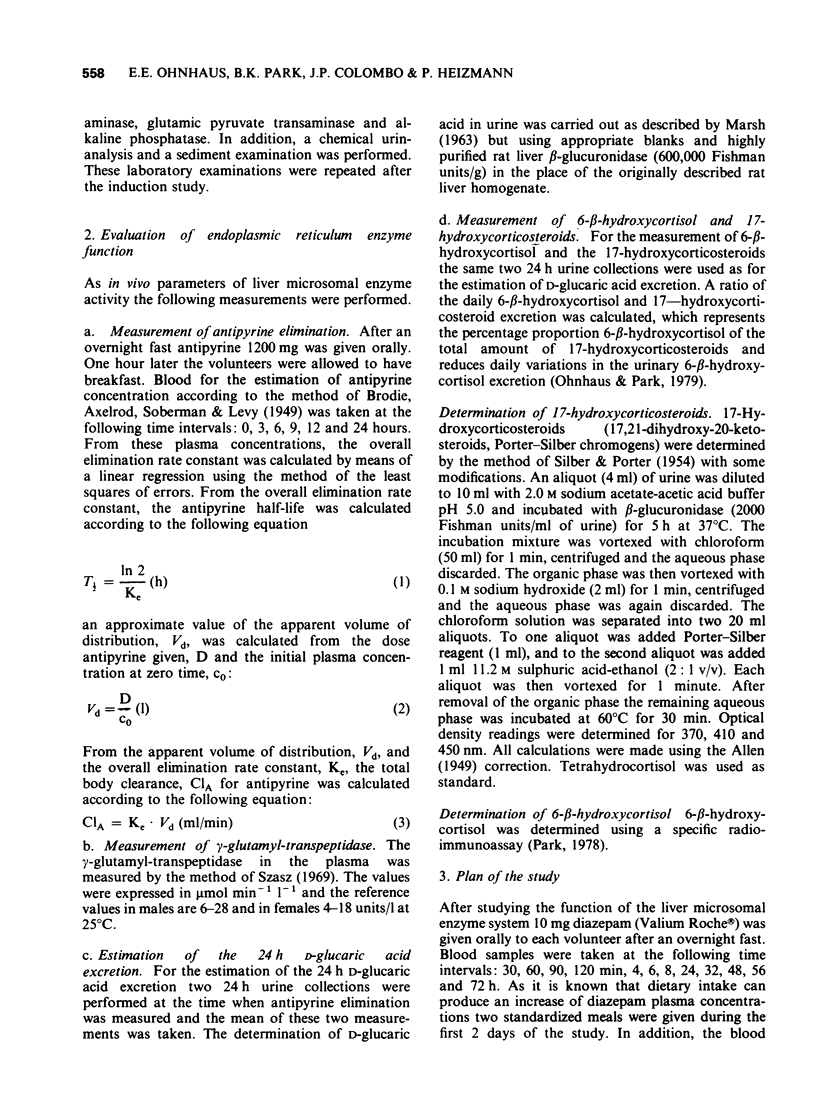
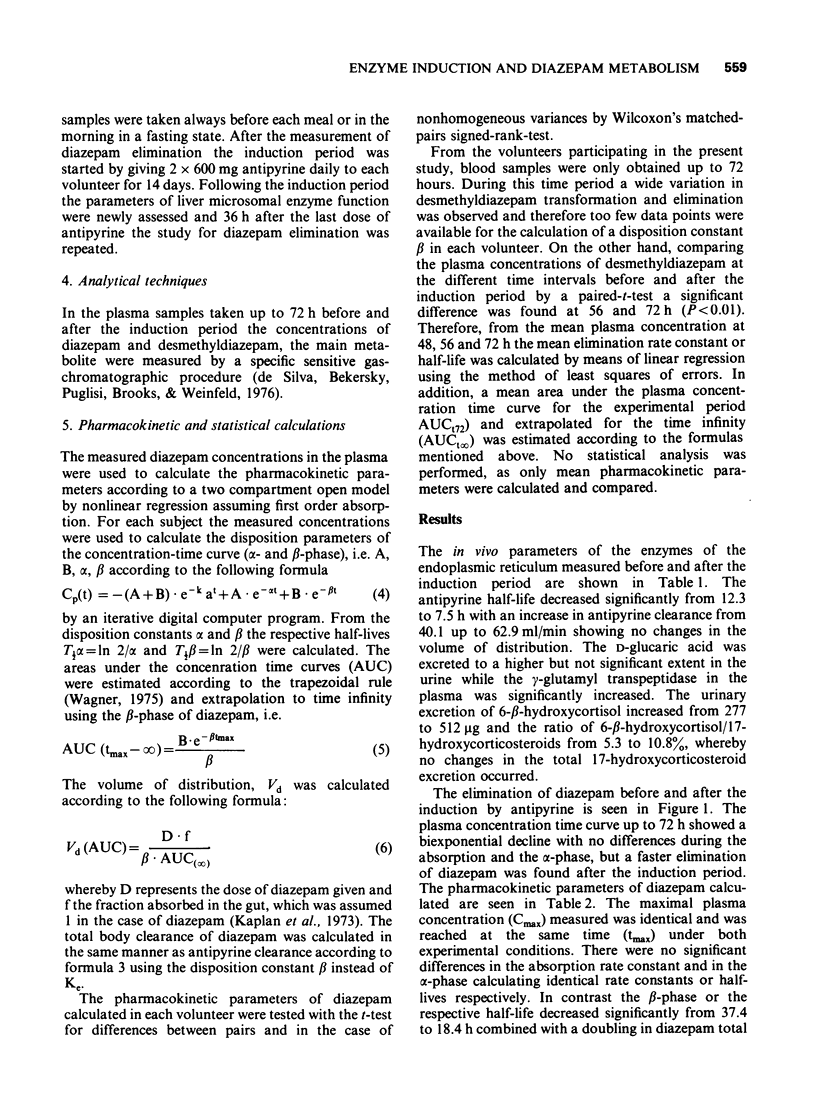
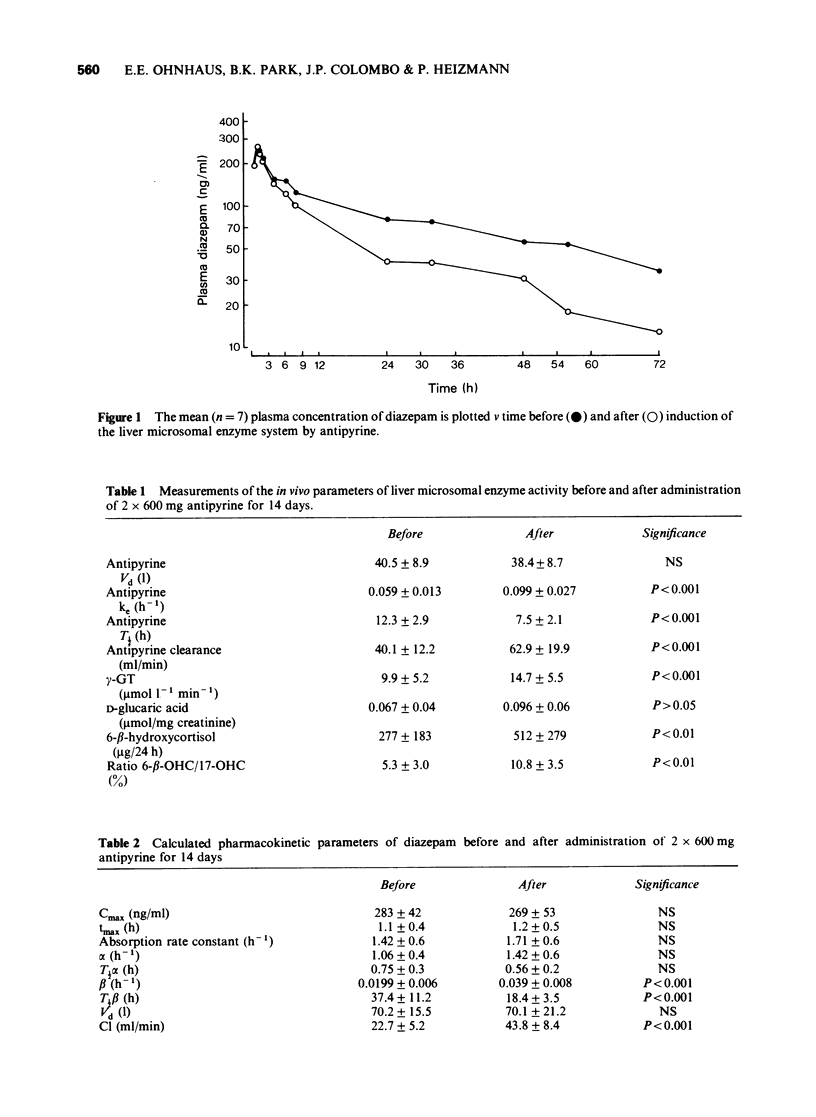
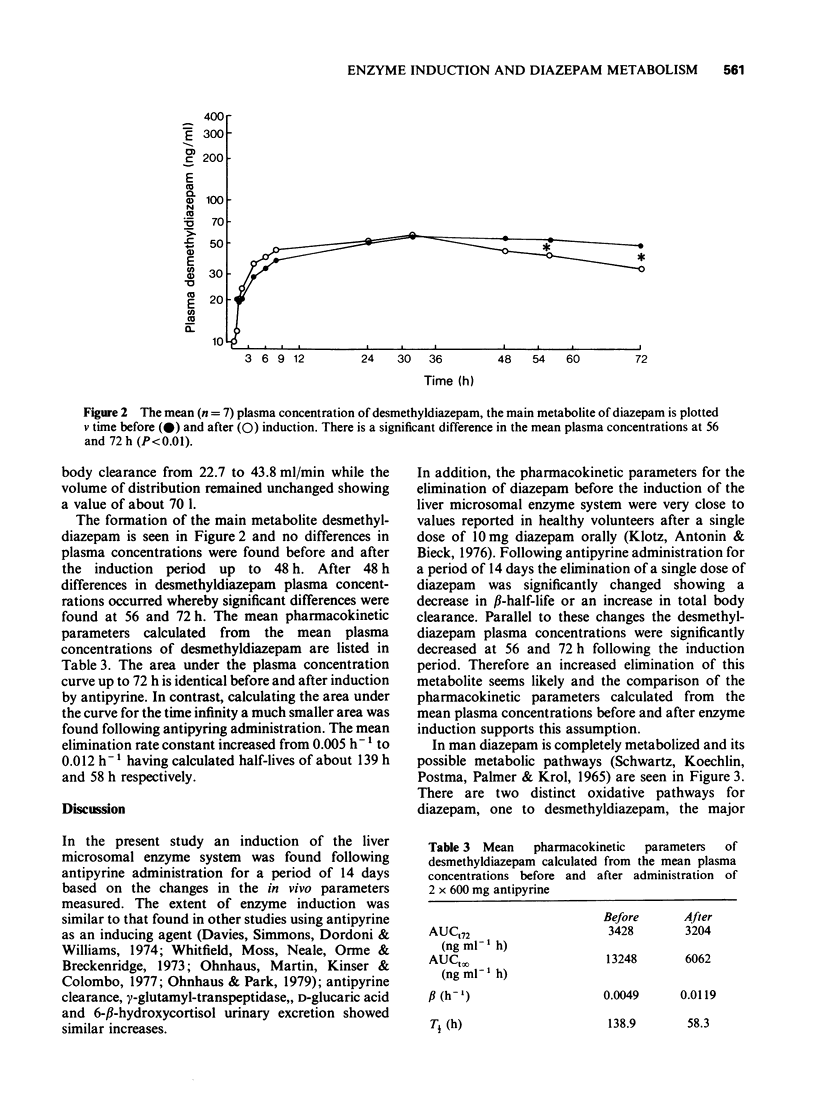
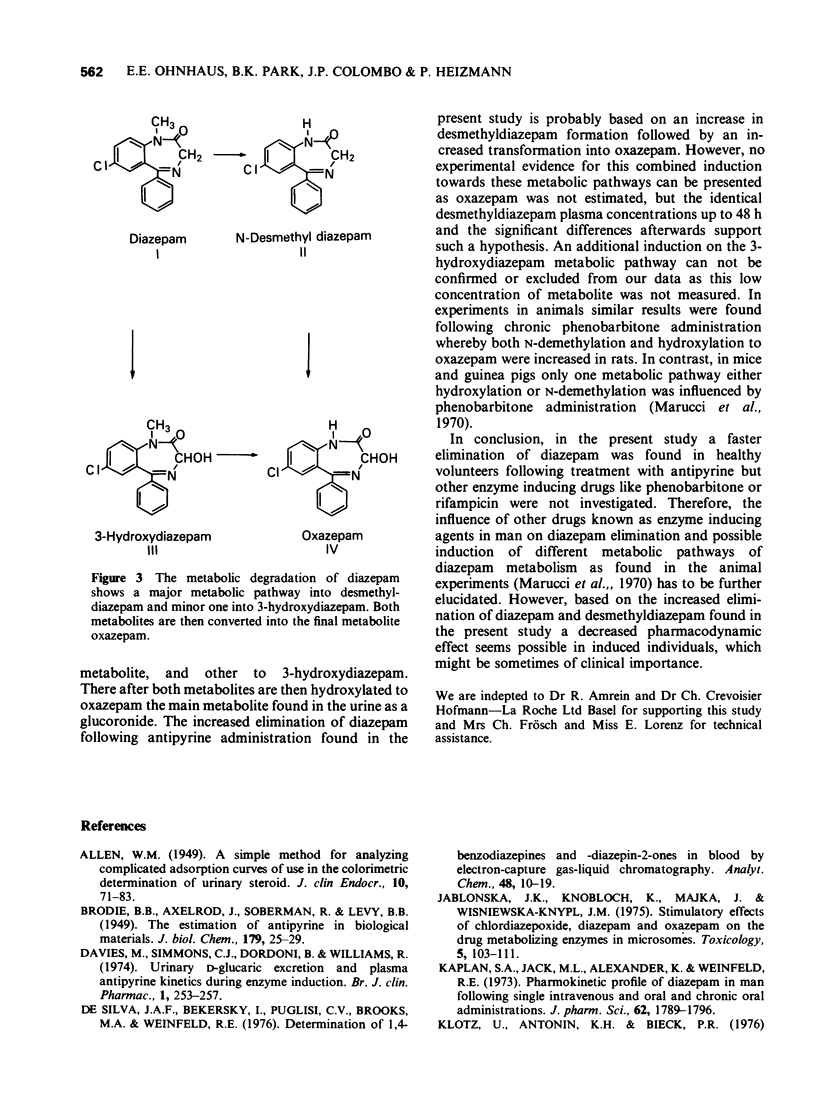
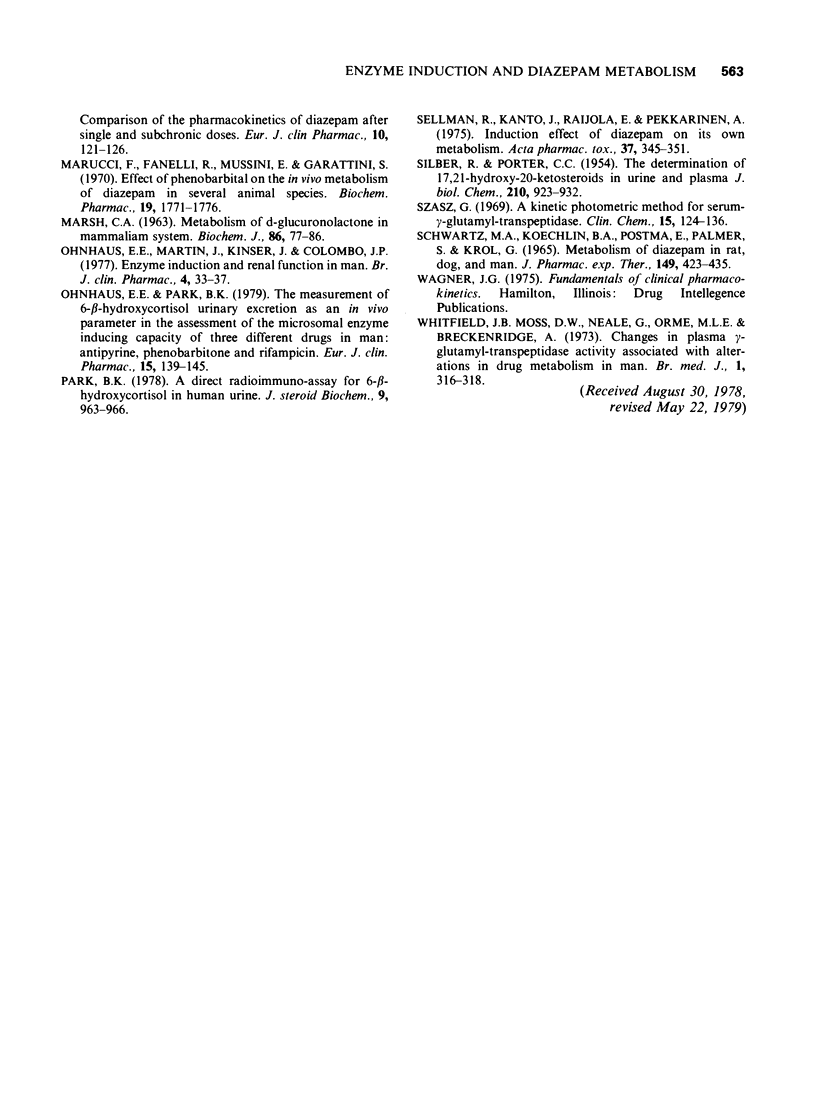
Selected References
These references are in PubMed. This may not be the complete list of references from this article.
- Jablońska J. K., Knobloch K., Majka J., Wiśniewska-Knypl J. M. Stimulatory effects of chlordiazepoxide, diazepam and oxazepam on the drug-metabolizing enzymes in microsomes. Toxicology. 1975 Sep;5(1):103–111. doi: 10.1016/0300-483x(75)90075-x. [DOI] [PubMed] [Google Scholar]
- Kaplan S. A., Jack M. L., Alexander K., Weinfeld R. E. Pharmacokinetic profile of diazepam in man following single intravenous and oral and chronic oral administrations. J Pharm Sci. 1973 Nov;62(11):1789–1796. doi: 10.1002/jps.2600621111. [DOI] [PubMed] [Google Scholar]
- Marcucci F., Fanelli R., Mussini E., Garattini S. Effect of phenobarbital on the in vitro metabolism of diazepam in several animal species. Biochem Pharmacol. 1970 May;19(5):1771–1776. doi: 10.1016/0006-2952(70)90169-3. [DOI] [PubMed] [Google Scholar]
- Marsh C. A. Metabolism of d-glucuronolactone in mammalian systems. Identification of d-glucaric acid as a normal constituent of urine. Biochem J. 1963 Jan;86(1):77–86. doi: 10.1042/bj0860077. [DOI] [PMC free article] [PubMed] [Google Scholar]
- Ohnhaus E. E., Martin J., Kinser J., Colombo J. P. Enzyme induction and renal function in man. Br J Clin Pharmacol. 1977 Feb;4(1):33–37. doi: 10.1111/j.1365-2125.1977.tb00663.x. [DOI] [PMC free article] [PubMed] [Google Scholar]
- Ohnhaus E. E., Park B. K. Measurement of urinary 6-beta-hydroxycortisol excretion as an in vivo parameter in the clinical assessment of the microsomal enzyme-inducing capacity of antipyrine, phenobarbitone and rifampicin. Eur J Clin Pharmacol. 1979 Mar 26;15(2):139–145. doi: 10.1007/BF00609878. [DOI] [PubMed] [Google Scholar]
- Park B. K. A direct radioimmunoassay for 6 beta-hydroxycortisol in human urine. J Steroid Biochem. 1978 Oct;9(10):963–966. doi: 10.1016/0022-4731(78)90058-4. [DOI] [PubMed] [Google Scholar]
- SILBER R. H., PORTER C. C. The determination of 17,21-dihydroxy-20-ketosteroids in urine and plasma. J Biol Chem. 1954 Oct;210(2):923–932. [PubMed] [Google Scholar]
- Schwartz M. A., Koechlin B. A., Postma E., Palmer S., Krol G. Metabolism of diazepam in rat, dog, and man. J Pharmacol Exp Ther. 1965 Sep;149(3):423–435. [PubMed] [Google Scholar]
- Sellman R., Kanto J., Raijola E., Pekkarinen A. Induction effect of diazepam on its own metabolism. Acta Pharmacol Toxicol (Copenh) 1975 Nov;37(5):345–351. doi: 10.1111/j.1600-0773.1975.tb00852.x. [DOI] [PubMed] [Google Scholar]
- Szasz G. A kinetic photometric method for serum gamma-glutamyl transpeptidase. Clin Chem. 1969 Feb;15(2):124–136. [PubMed] [Google Scholar]
- Whitfield J. B., Moss D. W., Neale G., Orme M., Breckenridge A. Changes in plasma -glutamyl transpeptidase activity associated with alterations in drug metabolism in man. Br Med J. 1973 Feb 10;1(5849):316–318. doi: 10.1136/bmj.1.5849.316. [DOI] [PMC free article] [PubMed] [Google Scholar]
- de Silva J. A., Bekersky I., Puglisi C. V., Brooks M. A., Weinfeld R. E. Determination of 1,4-benzodiazepines and -diazepin-2-ones in blood by electron-capture gas-liquid chromatography. Anal Chem. 1976 Jan;48(1):10–19. doi: 10.1021/ac60365a037. [DOI] [PubMed] [Google Scholar]


